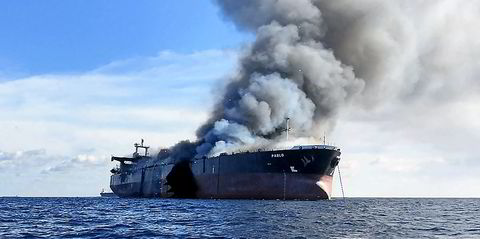Banks are back in shipping. Once again, the industry’s mainstay capital providers are speaking with confidence about their ability to lend and their desire to grow.
Some would rightly say they never really went away. But in the long shadow of the 2008 global banking crisis, even those institutions that avoided the worst of the crunch appeared pessimistic over the long-term fate of the business.
A powerful narrative emerged about banks' reduced capital resources, stressed loan portfolios and tightened regulatory controls.
If you were anything other than a blue-chip name, it appeared you were probably better off attempting to tap the bond or equity markets, or striking a deal with an emerging Chinese lessor.
Problems have been heightened by the poor markets that weakened the credit profiles of many shipowners.
However, the reality has been more nuanced. While there has been a sharp fall in lending capacity, bank finance has remained a vital element for the industry.
What has changed recently is that those banks that remain active are regaining the confidence to talk uptheir own books. The survivors are those who have taken a long-term view, according to ING managing director of shipping finance David Grant.
Loan stars
The latest figures from analysis service Dealogic show around $31.2bn was raised from 114 syndicated loans in the first nine months of 2017. That compares with $14.2bn raised from bonds, and public and private equity in the whole of 2017, according to Marine Money.
Smart finance may be tough on smaller and weaker shipowners, but it could help underpin greater sustainability through the next market cycle
While the volume of shipping loans was last year broadly similar to that between 2009 and 2012, it has fallen in each of the past three years and was less than half that in 2014.
Circumstances have changed the game for shipping bankers, as well as their clients, as the Marine Money conference heard recently.
Tougher capital adequacy rules for all banks have created a fight for capital resources in the shipping divisions of the institutions themselves.
Gone are the days when relationship bankers could justify hefty loans on paper-thin margins to what they saw as good clients, often on the back of little more than long-standing trust and a handshake.
Today, all the talk is about “smart capital”.

Shipping bankers are being forced to be more selective in the loans they make, and to price them at more realistic — that is, higher — interest rates. Commitments also need to show longer-term sustainable returns, senior bankers say.
Cross-selling to bank customers is as much a fact of life in corporate banking as it is in the consumer market. And today, the practice has even made it into the language of the most traditional shipping banker.
Higher capital demands on bank loans to weaker shipowners is no bad thing for the long-term viability of the business. Despite record low newbuilding prices, orders have remained thin on the ground and most attribute that to the scarcity of finance.
Smart finance may be tough on smaller and weaker shipowners, but it could help underpin a shift towards greater sustainability through the next market cycle, and drive further consolidation.
Citigroup’s shipping doyen Michael Parker says that despite the crisis over the past decade, banks will remain the main provider of finance for shipping — but only at a price.




